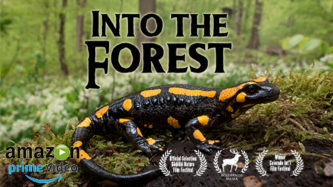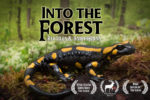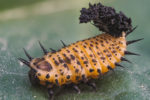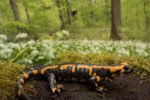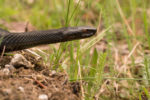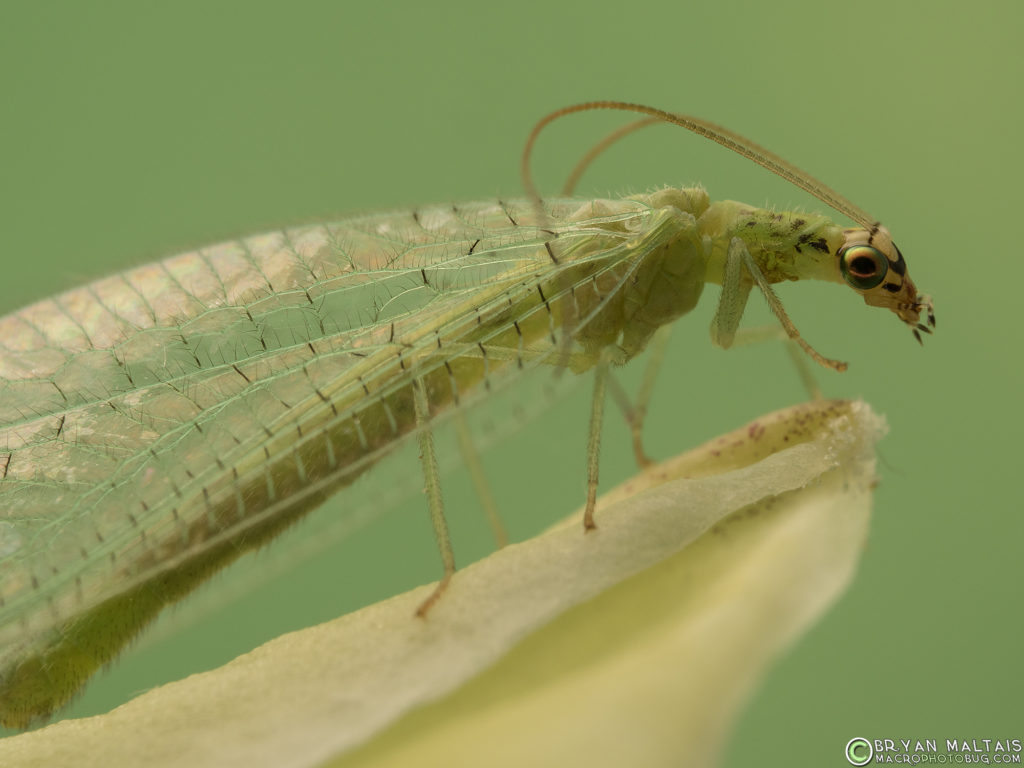
The seasons pass quickly when you closely inspect nature every day, as a macro photographer would. Different plants and insects appear every few days, as others disappear like passing minutes on a clock. By the onset of Summer when daytime temps are in the 90’s, it becomes more difficult to find insects than in spring-I have to venture a bit further to find them. Mid June is when the beautiful flowering spikes of the Yucca bloom on the hillside behind my house. Yucca flowers are large and leathery, and harbor much insect life. Most are covered in Aphids to some degree. The aphids are tended to by ants who milk them for honeydew. The succulent, soft-bodied aphids also attract predators who feed on them. Ladybugs are common predators who dot the Yuccas red like tiny Christmas ornaments. The aphids also attract Lacewing larvae. The larvae feed on the Aphids and then stick the aphids’ dead carcasses on their backs to camouflage themselves against Ants who defend their Aphid herd. Newly metamorphosed Lacewing adults were fluttering around the grove of Yuccas at sunset. They fly slowly and delicately; more of a listing hover. The Yucca micro-habitat continues to nourish the Lacewings into adulthood. The flowers provide pollen and nectar, and the Lacewing adults consume honeydew from the Aphids.
I took a few shots of some Lacewings in situ, but it was too difficult to achieve a good perspective that showed all of the beautiful details of their intricate bodies. I brought one inside for a studio shoot using the same setup as shown here. I placed the Lacewing on a Yucca flower that I snipped and brought inside. At first I tried a deep focus stack, but the insect continued to preen itself for hours and never remained still. I did pull off a partial focus stack of 8 images, shown below, that reveals the details of the wing. I find the eyes most interesting with metallic shades of green and yellow.
Equipment used:
Olympus OM-D E-M5 II Camera
Olympus 60mm Macro Lens
Rayonx 250 Super Macro Filter
46-43mm Step Down Ring
Neewer Mini Flash
Olympus Flash Cable
Flexible Arm
EXIF:
Camera: Olympus OM-D E-M5 II
Lens: Olympus M.Zuiko 60mm f2.8 Macro
Filter: Raynox 250
Configuration: normal
Extension Tubes: no
Image Stack: no
Stackware: n/a
Aperture: f/11
Shutter Speed: 1/250th sec
ISO: 200
Light Source: Neewer Mini Flash with DIY diffuser
Stabilization: Beanbag
Subject Size: 2 cm
Species: Green Lacewing (Chrysoperla carnea)
Location: Fort Collins, Colorado
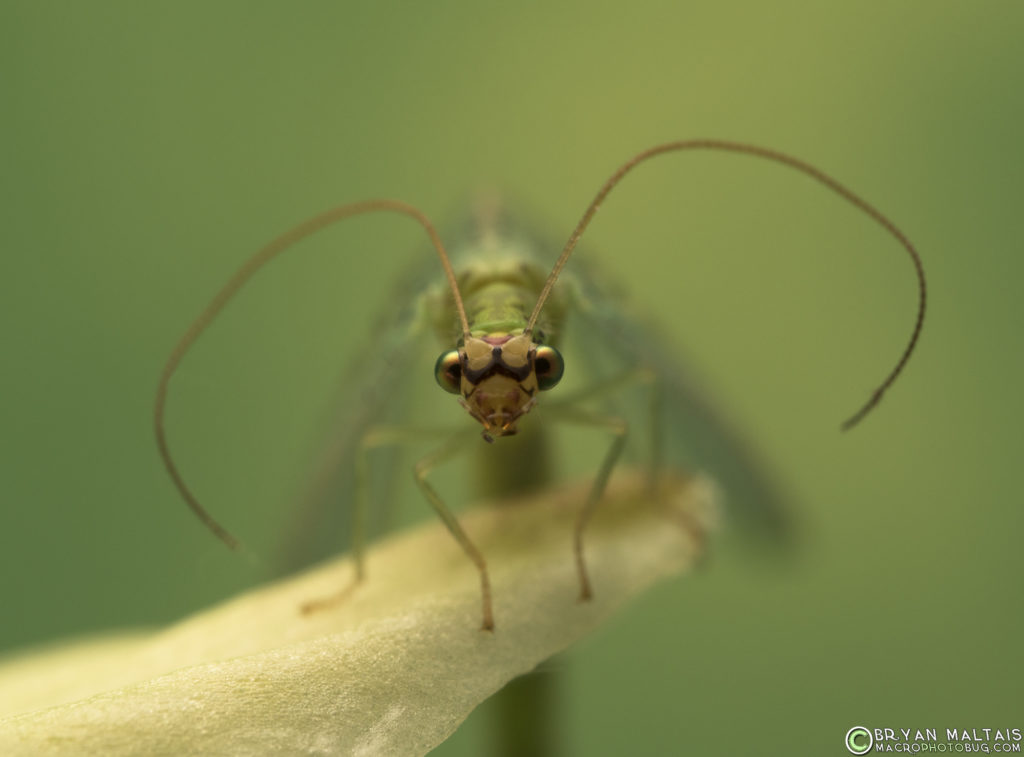
Green Lacewing, Raynox 250 close-up filter, Olympus 60mm macro lens, Olympus E-M5 II, f/8, ISO 200, 1/250th sec, using Neewer Flash and DIY diffuser
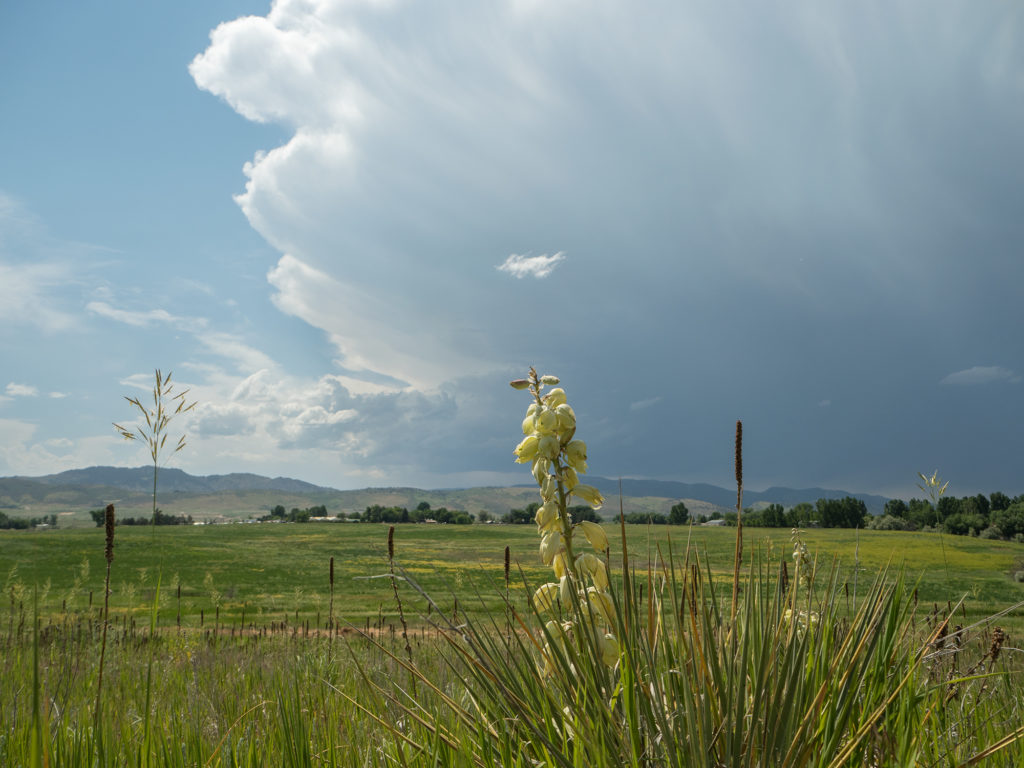
Lacewings were flying around Yucca in full bloom on the hillside behind my house
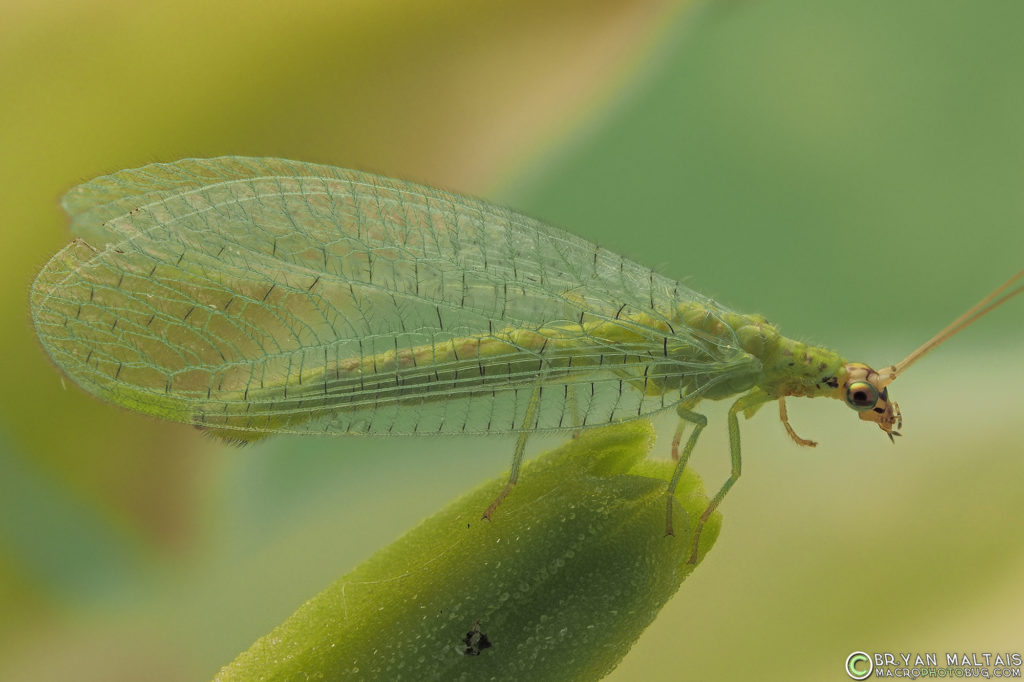
8 stack. Olympus 60mm macro lens, Olympus E-M5 II, f/11, ISO 200, 1/20th sec, using Neewer Flash and DIY diffuser
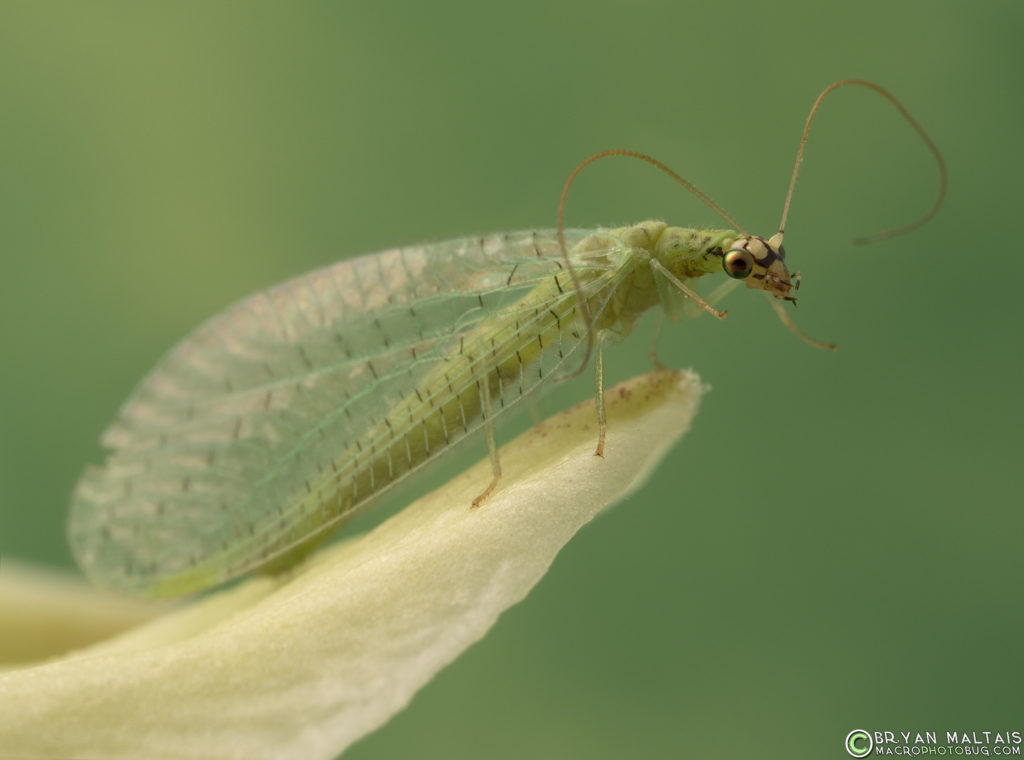
Green Lacewing, Raynox 250 close-up filter, Olympus 60mm macro lens, Olympus E-M5 II, f/11, ISO 200, 1/250th sec, using Neewer Flash and DIY diffuser
Related






